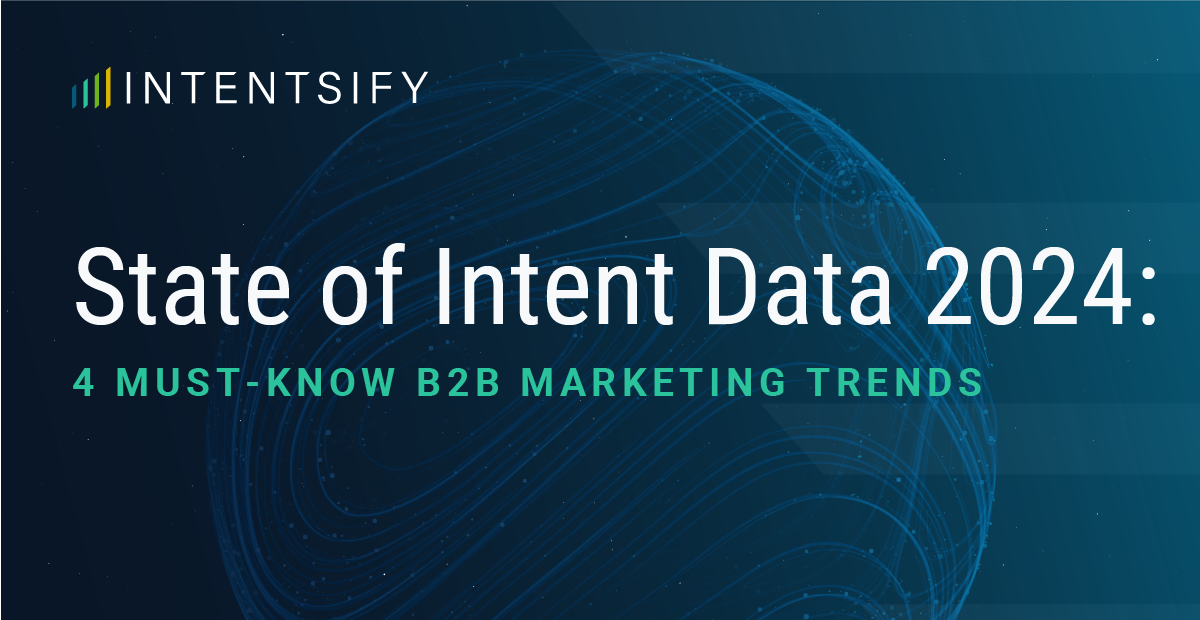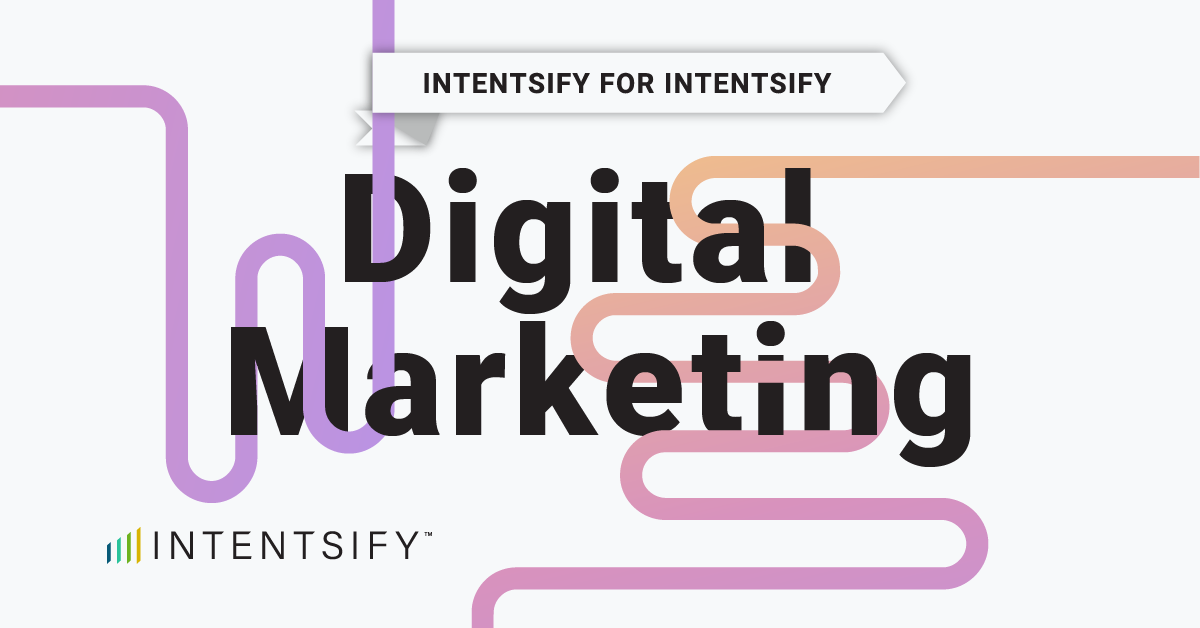With intent data’s ability to enhance nearly all aspects of account-based marketing (ABM)—from top-of-funnel branding efforts to post-sell customer success initiatives—its value for B2B marketing (and demand generation efforts in particular) is loud and clear. That’s why 62% of companies are currently using one or more intent data solutions—a 29% year-on-year jump.
Given intent data’s wide range of use cases, it can be tempting to dive right in. There’s nothing inherently wrong with this approach. However, you’ll likely drive better results (and save yourself a few headaches), if you first pave the way for your intent data implementation with a thought-out strategy. This often involves a “crawl, walk, run” approach, starting with one or two use cases, measuring results, optimizing efforts, and expanding to additional use cases from there.
To help ensure you and your organization get the best results from your investments, here are eight pitfalls to avoid when leveraging intent data to drive demand generation use cases.
1. Forgetting to Establish Baseline Performance Metrics Before Implementing Intent Data
According to a recent Demand Gen Report survey, 40% of marketers believe their ability to measure marketing’s impact needs improvement. Documenting a baseline performance before launching any new initiative is key to gaining better insights down the road. It’s no different with intent data adoption.
Before deploying intent data, it’s important to establish such baseline demand generation metrics.
Specifically, you’ll want to document the down-funnel metrics—such as conversions to sales-qualified leads (SQLs), pipeline opportunities, and close-won deals.
The metrics you track should depend on which intent data use case you start with. For example, if you’re using the tool for third-party demand gen (e.g., content syndication), you’ll want to track lead conversion rates. Specifically, you’ll want to document the down-funnel metrics—such as conversions to sales-qualified leads (SQLs), pipeline opportunities, average deal size, and close-won business—because those are what ultimately matter.
By establishing baseline performance metrics from the start, you’ll gain a clearer view of what’s working and what’s not. For example, you may find that target-accounts spiking on certain topics/keywords is a greater indication of intent to buy than others.
2. Leveraging Intent Before Creating Demand Generation Strategy
The best intent data results typically come from teams who use it to boost the impact of solid demand generation strategy.
The ultimate goal of demand generation programs is to develop relationships with ICP-fitting prospects and nurture them into long-term customers. Demand generation strategies involve a lot of moving parts and supporting resources:
- A well-defined demand funnel, outlining the various funnel stages and how leads/accounts convert through them
- A formalized lead/account scoring methodology, as well as cross-functional nurturing and/or follow-up processes
- A library of content, organized according to your typical buyer journey
Setting up these elements beforehand will help effectively move prospects down the funnel, resulting in more pipeline and revenue. We’ll now dive deeper into each of these elements…
3. Lacking a Lead/Account Scoring Methodology
Creating a scoring methodology can be a tedious process. But it’s imperative. How else can you measure lead conversions between demand-funnel stages if you lack a quantifiable way to score them? Further, neglecting scoring only wastes time and resources on accounts that don’t yield results—which is what intent data is supposed to prevent in the first place.
It’s also a good idea to use intent data to refine your scoring models. For example, if a prospective account is spiking on keywords or topics specific to your brand or products, they’re likely pretty deep into their buying journey, and should be scored accordingly. This is accomplished much more easily if you already have scoring models in place.
4. Neglecting Lead/Account Nurturing Efforts
This is an especially big pitfall when using intent data for third-party demand gen efforts. Third-party leads (even those from intent-identified accounts), haven’t engaged with your brand as much as your content—the research, ideas, and advice around a specific issue. Thus, most of these prospects are far earlier in their journey (compared to inbound leads), and you’ll want to treat them as such.
Nurturing these leads with relevant content via email sequences—before BDR follow-up—is usually the best way forward. The great news is that intent data reveals valuable insights to help with nurturing. By monitoring the right topics and keywords, you can get a strong idea of which solutions target accounts are most concerned with as well as where they’re at in their buyer journey. You can then use this intelligence to select the right messaging (and nurture tracks) for each lead and/or account.
5. Failing to Get Sales’ Buy-In
Successful demand generation depends on good collaboration between marketing and sales teams (customer success, too!).
Collaboration is even more imperative when adding intent data into the mix, for several reasons:
- Marketing needs sales’ input to select the right topics/keywords to monitor
- Sales needs to understand all the ways marketing is using the data (for targeting, messaging, scoring, etc.)
- Sales’ follow-up efforts should align with the messages used by marketing to nurture accounts
Therefore, marketing should include stakeholders from the sales team when designing your intent data rollout strategy, even if sales won’t be directly using intent for their own specific use cases.
6. Haphazardly Selecting Intent Data Keywords and Topics
Monitoring the right keywords and topics is crucial to intent data success. Beyond just telling you which accounts you may want to prioritize, intent signals attached to each topic and keyword are what help you identify:
- Which stage of the buyer journey target accounts are likely in;
- Which messages and content you should use; and
- Which channels and tactics are likely to be most effective.
Moreover, it’s a good idea to monitor both topics and keywords, as this is the best way to ensure the contextual relevance of content consumed (topic tracking) and targeting precision (keyword tracking).
You’ll want to select keywords and topics according to two general ideas: interest categories (think: topics/keywords around specific solutions) and buyer journey stages. Selecting based on interest categories help you identify which products/services prospects are most interested in. Selecting based on buying stage helps you both score leads and choose messaging according to where prospects are at in their path to purchase. (Read Intentsify’s new ebook “Activating Intent Data: Understanding, Selecting, and Monitoring Topics and Keywords” for more guidance on selecting the right keywords and topics.)
7. Implementing Intent Data Before You Have Enough Content
Intent data is largely about letting you know which information prospects need and when. Yet, if you don’t have such information (i.e., content) readily available to send to intent-identified prospects, you’ll miss out on this important benefit.
You should have at least a basic range of content in place before implementing your intent data program. Specifically, you’ll want content assets for each interest category and each buying stage to be most effective.
8. Neglecting to Analyze Website Activity Against 3rd-Party Intent Signals
With the various sources and types of intent data that exist, it’s easy to forget that website visitor activity is also an intent source—and it should be used to further inform your intent-supported demand gen activities.
When prospects visit your website, this indicates that they’ve passed the initial buying stages of “Identifying a need” and on to “Exploring solutions” or even “Considering specific products.”
If you have a solution that monitors your website activity, make sure to cross reference these signals alongside your 3rd-party intent signals. The combination will provide you with both a broader and more accurate view of your target accounts’ research activities and interests—and you can use these insights to drive more meaningful conversations with your prospects.






